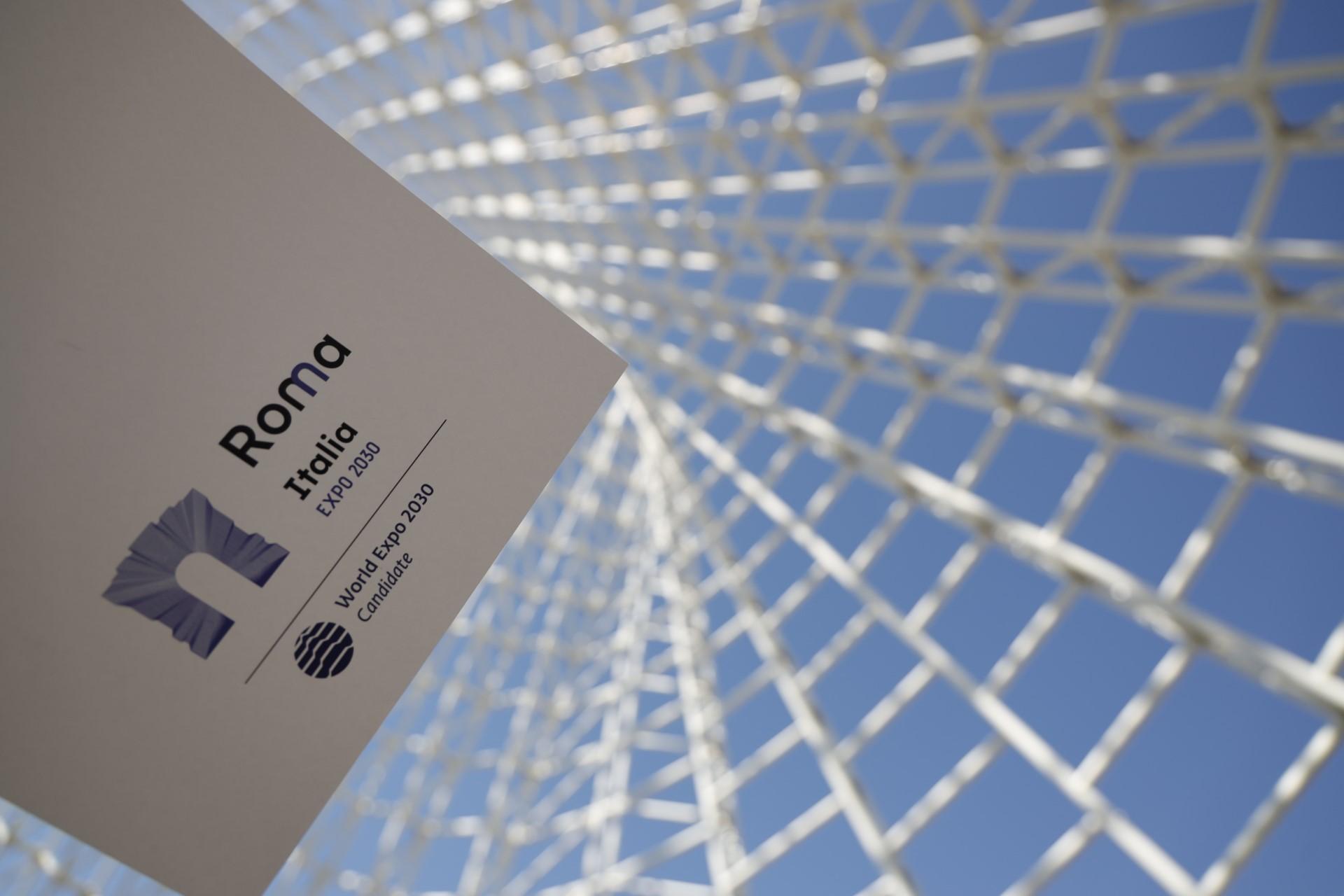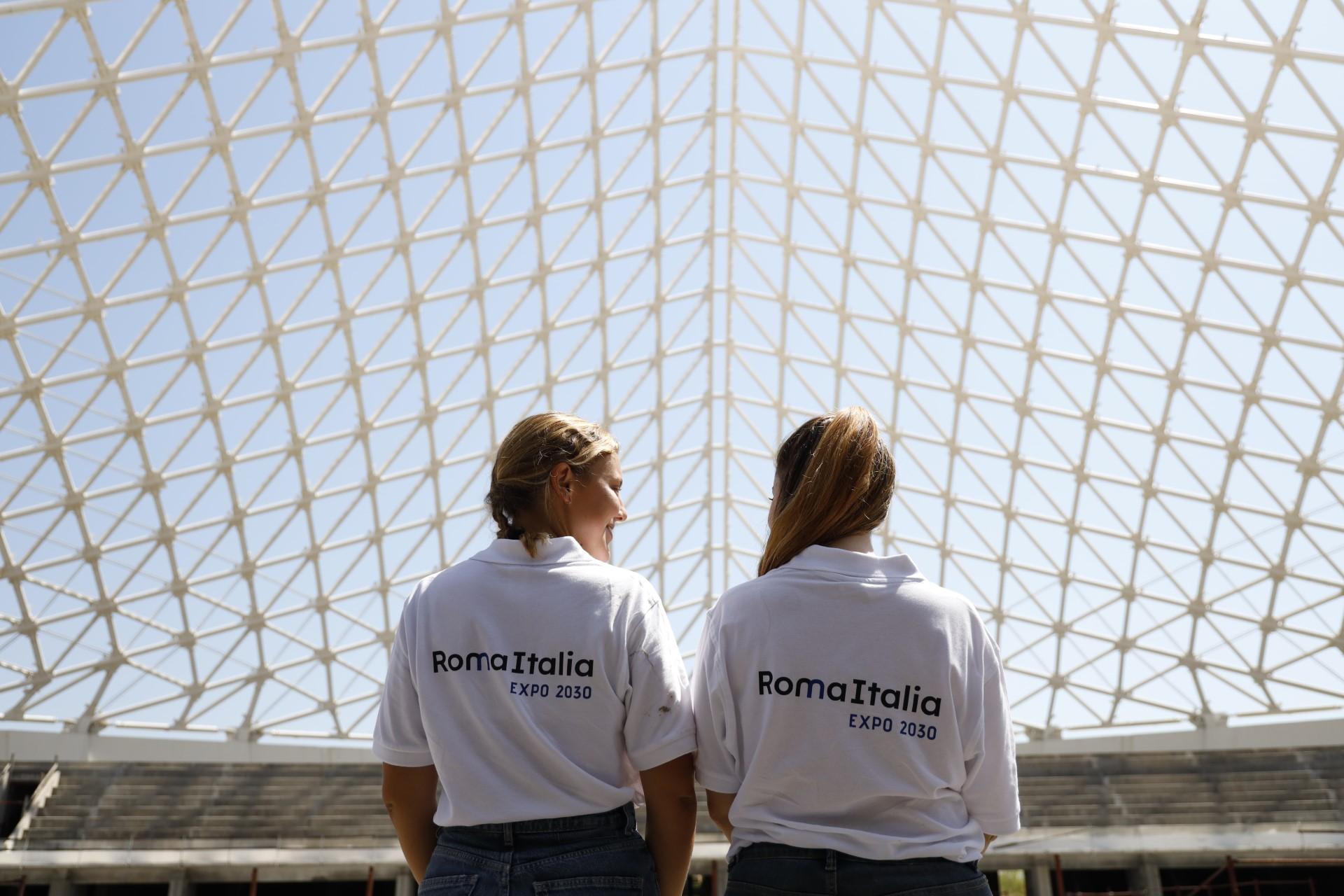PHOTO
Italy’s national football teams support Rome’s bid for the Expo 2030. In the decisive month before the final vote, scheduled for 28 November in Paris, the Azzurre and the Azzurri will take to the pitch sharing the values of the Italian capital’s bid, in competition with Riyadh and Busan.
It wasn’t long ago that the FIGC President, Gabriele Gravina, expressed the full support of the FIGC, underlining in a letter of support, how to involve the world of football considering football’s incredible power of unity. While the Expo, in fact, looks to all intents and purposes to be an opportunity to start imagining new territories on a human scale and new relations between us and our habitats ('Humanlands'), sport will have to play a fundamental role in enhancing the concept of 'People and Territories' on which Rome's bid hinges.


In this light, the head of the Azzurro delegation, Gianluigi Buffon and footballer, Elena Linari, together with a good group of Azzurre, made videos endorsing the uniqueness of the capital and its dossier with the slogan, #ISupportRomaExpo2030. Moreover, in the UEFA EURO 2024 qualifier match against North Macedonia, which will be played in Rome, the Azzurri will take to the pitch supporting Expo Roma 2030, with the advertising boards and big screen displaying messages of support in the Stadio Olimpico.
‘It’s time to score a goal all together, because you never win anything by yourself, you win together,’ said Buffon. ‘We support Roma Expo 2030 because we believe in its values of connection, humanity and inclusion,’ the Azzurre chanted in chorus.
THE DOSSIER
The volume is divided into 21 chapters, 14 required and 7 added and can be summarised into five fundamental parts (BIE rules do not allow the entire dossier to be published yet).
The five parts of the Expo Roma 2030 Dossier
- The extensive commitment of institutions to host the Expo and the support of the people;
- The development of the theme chosen for the Exposition: ‘People and Territories: Regeneration, Inclusion and Innovation,’ exploring its universal value and centrality in the debate today;
- A third section is dedicated to the city of Rome and its region as the ideal place for the 2030 Expo, thanks to its unique history and culture, its central position between three continents and being an important hub of multilateralism and international cooperation: home to 337 NGOs and 420 embassies, making it the world capital of solidarity and diplomacy. This section illustrates the city’s accommodation capabilities and how all the participants and visitors will be hosted.
- The fourth section represents the heart of the dossier, i.e. the physical project that stretches across the entire city to the Tor Vergata exhibition site. It illustrates the thematic pavilions and the ways in which countries can participate, a project that will unravel across the entire city in a constant dialogue between the Expo and its territory. This section details the economic and financial feasibility plan for the entire event.
- The final part of the dossier is related to the fundamental transition after the Expo and all the security and organisational aspects that the Capital can and must introduce in view of the Expo.
The biggest urban solar park in the world.
As described in Expo Roma 2030’s Masterplan, created by the design and innovation studio CRA (Carlo Ratti Associati), together with architect, Italo Rota and urban planner Richard Burdett, the largest urban solar park in the world will be built for the capital's bid.
The park will in fact cover an area of 150,000m2 and will be able to produce 36 Mega Watts, which will make it the biggest urban solar park accessible to the public. It will consist of hundreds of unique 'energy trees' that open and close their panels during the day, collecting energy and also offering visitors plenty of shade. From above, this infrastructure will give the entire Expo site a Mosaic appearance. This complex energy network is completed by the 'Eco-system 0.0' pavilion, the tallest building at the Expo, which provides cooling through evaporation.
The Masterplan subdivides the Expo Roma 2030 site into three main areas: the city, the boulevard and the park in a pattern between the artificial world and the natural world. The layout is characterised by a gradual transition from urban to natural, from west to east. The city in the west will serve as Expo Village, and after the event, it will become an extension of the Tor Vergata University campus. The boulevard, the central pedestrian zone, is a route through all the national pavilions. Finally, the park in the east is covered in lush vegetation and accentuated by themed pavilions, including 'Pale Blue Dot', dedicated to spreading knowledge about the natural world.
Expo Roma 2030’s commitment to the revitalisation of the area is exemplified by the redevelopment of Le Vele, an impressive sports complex designed by Spanish architect, Santiago Calatrava. The structure will become one of the main pavilions of Expo Roma 2030, hosting public events and showing the transformation of Tor Vergata. Next to Le Vele, the main entrance to the site will serve as the main access point with a series of new transport and mobility links. Amongst these is a long green corridor linking Expo 2030 Roma to the adjacent archaeological sites of the Appian Way and other historical buildings and monuments in Rome.
THE NUMBERS OF EXPO ROMA 2030
50.6 billion
The total value of the generated economic impact
18.2 billion
The short-term indirect economic impact
10 billion
The direct economic impact (public and private investment and participants)
30 million
Estimated attendance
11 thousand
The new companies that will be created in Rome
300 thousand
The number of jobs created
